| Having looked at the
outside of the Durham museum, it is time to go downstairs and look at the
inside and its various collections. First up is the stagecoach which
provided transport for mail and people in the days before the train. | 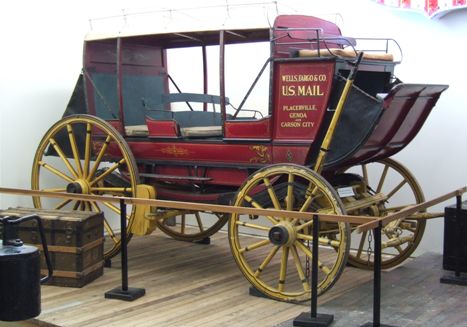 |
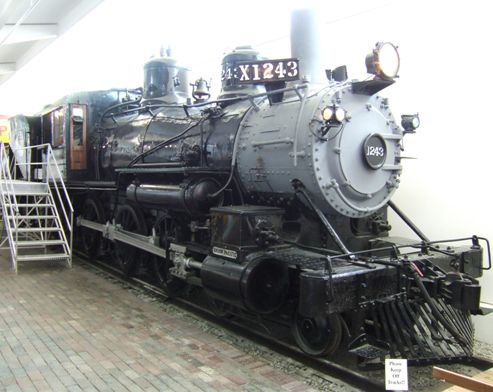 |
Then we have the train, a relatively small train from 1890 which would have
hauled passengers and freight through here. It is a 4-6-0 of a type called
a 10 wheeler and was built by Cooke in New Jersey. |
| The train was almost the
only form of transport apart from the horse until the 'horseless' carriage
came along. This is a 1906 Holsman built by Holsman in Chicago between 1903
and 1910. It has a two cylinder air-cooled engine and a chain belt drive. | 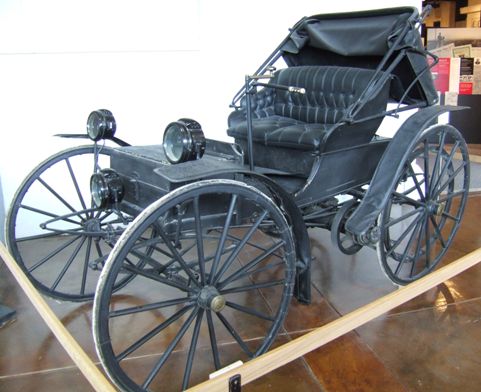 |
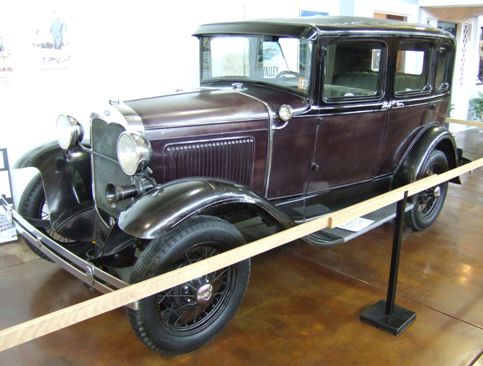 |
This is slightly more modern, probably built in the 1920s, but there is
nothing giving more details. |
| This is a very early 1922
Mack delivery truck owned by an early Omaha business called Bekins Van &
Storage Co. The company was founded in Sioux City IO in 1894. | 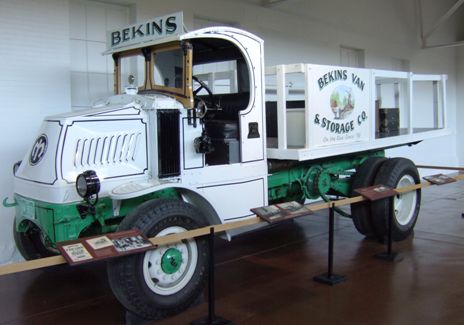 |
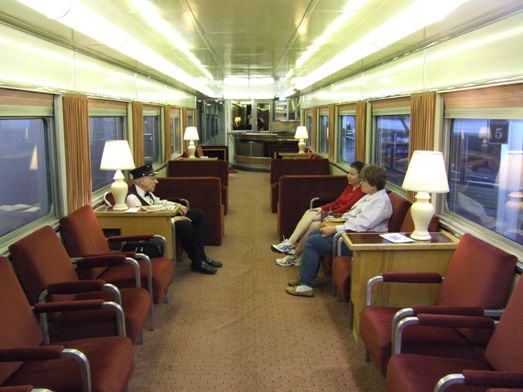 |
Inside the passenger car is a former conductor on the trains. He was happy
to reminisce to any passing visitors although after a while he tended to
repeat himself.. |
| There is a display case
with a number of 1:8 models. The detail on the carriages is superb. | 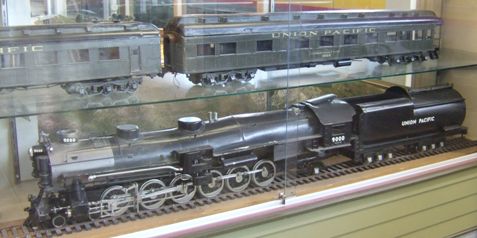 |
 |
Behind is a large 'O' gauge model layout with an occasional train running.
Model railroading is very big in the US. |
| But on to other 'big'
things like this buffalo as we moved onto other collections featuring the
pioneer days. | 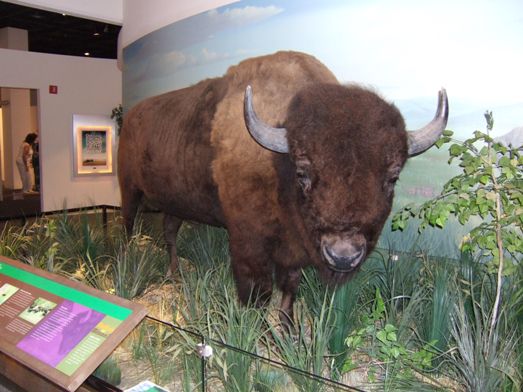 |
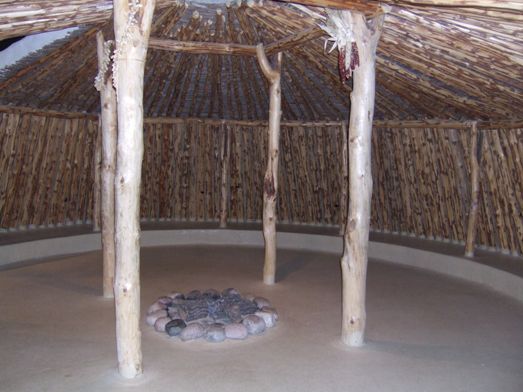 |
This is a Pawnee lodge. They were a major tribe on the plains and there
are displays on their lifestyle, traditions and history. |
| Part of the same display
is this travelling tent. Museums here are usually working hard at the
educational aspects of their displays and you can learn a lot here if you
can spend the time. | 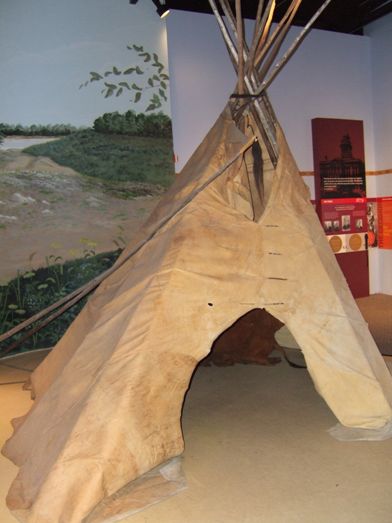 |
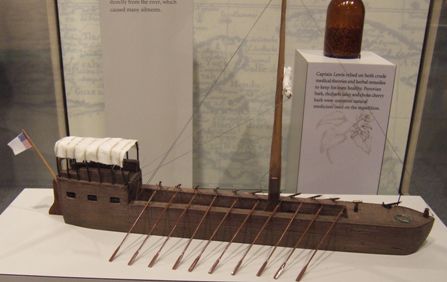 |
I was interested by this boat which at first glance would seem to have come from ancient
Egypt. But apparently it is a model of the keelboat used by Lewis and Clark
on their expedition. It was 55 ft long and a little over 8 ft wide and could
carry approx 10 tons. The mast was hinged and carried a large square sail. |
| A boat of another kind,
often known as a prairie schooner. Many of these Conestoga wagons were built
in Omaha which was at the junction of several of the major trails across the
Plains to the Rockies. The Mormons also passed through here on their way
from Illinois to Utah. | 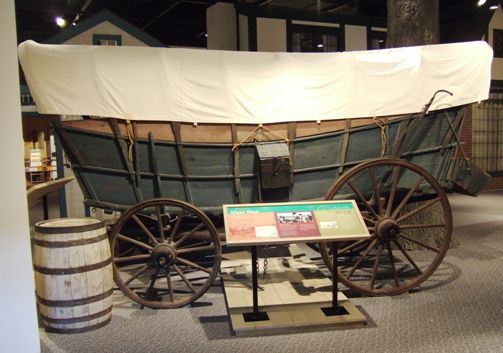 |
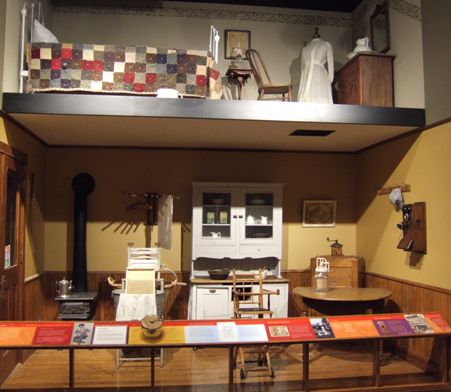 |
There are several displays of rooms in houses of different era. Note the
patchwork quilt on the bed above. |
| There are also displays
of more communal rooms. This schoolroom with its desks and slates, the
alphabet on the wall, and the picture of the president will be used by
school parties to enable the kids to experience school as it used to be. | 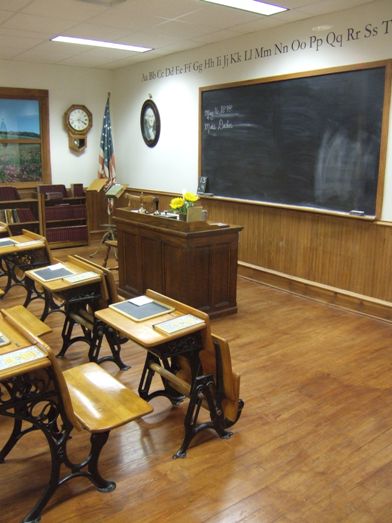 |
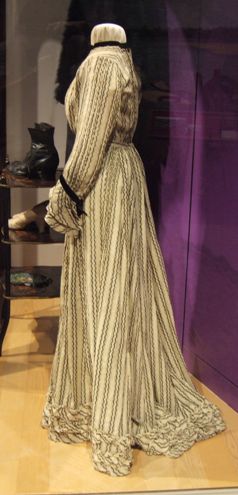 |
A dress of the period. To look at the pictures one gets the impression that
all the pioneer women dressed like this while they were travelling, which I
find hard to believe considering the hardships they had to endure. |
| In 1898 there was a huge
exhibition in Omaha, copying the world's fairs in other cities. A number of great pavilions were constructed. This
is
a model of them and it is amazing for its detail and the complexity of the
exhibition halls. The model was constructed by local architects for the
centenary in 1998. | 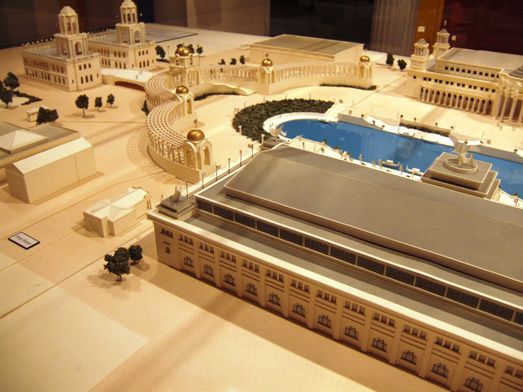 |
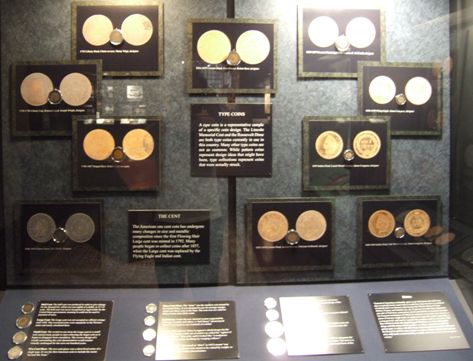 |
A separate exhibition displays the 'Reed' collection of American coins.
Only a part of the collection is on show, but this would have taken some time to absorb. There
is an enormous amount of detail on coins and coin making. At the time of
Reed's death, the collection was complete apart from one coin. This is one of
the top three collections of its type in the US. |
| Just three of the
thousands of coins on display. The other side of the cabinet gives
information of the obverse of these coins. Some of these coins never made it
to circulation and only three of four examples exist. | 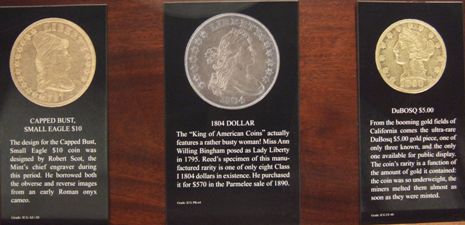 |
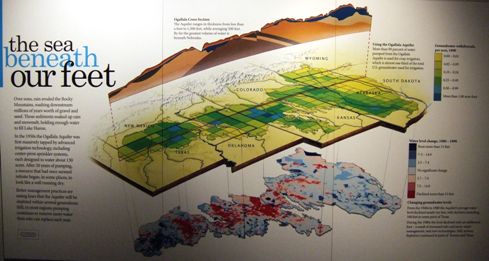 |
At the end of one hall is a travelling exhibition on the Ogallala aquifer,
which lies under most of western Nebraska and parts of several other states as well.
There is a vast amount of information on water usage and conservation. 94%
of water use in the US goes for crop irrigation and in many places the water
is being used much faster than it is being replenished. The water level in this
aquifer is now falling and work is now being done to try to bring supply and
demand more into balance, a difficult task when more and more homes are
being built, and modern industries consume ever more water. This exhibition is part of the education process. |
|